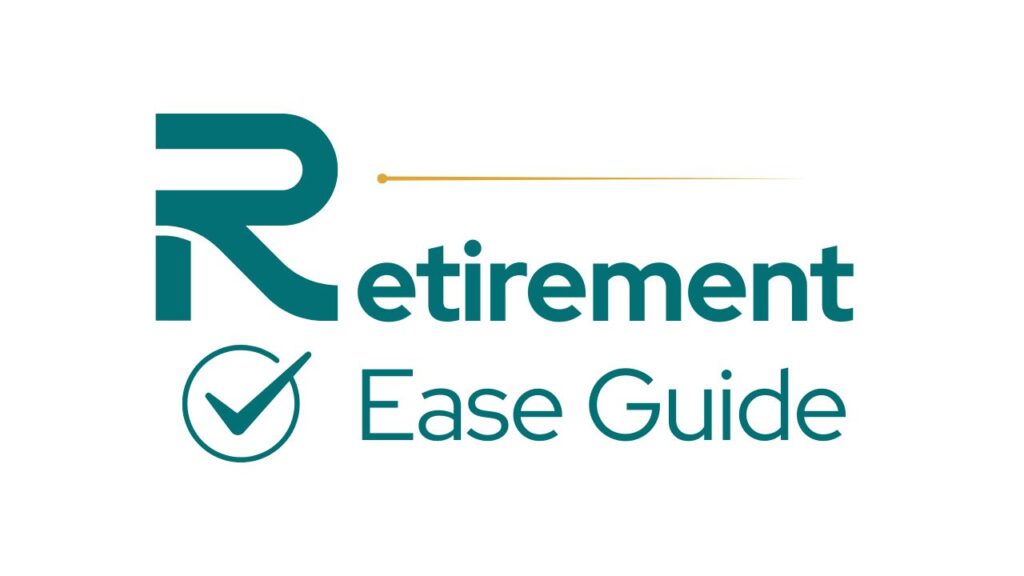I’m Saving for Retirement
“Plan Early, Retire Confidently — Turn Today’s Savings into Tomorrow’s Freedom.”
I’m Saving for Retirement — The Complete Guide to Planning, Investing, and Achieving Financial Freedom
Discover how to save smartly for retirement with Retirement Ease Guide. Learn how much you’ll need, explore savings strategies, investment options, and use our free calculators to stay confidently on track toward a stress-free retirement.
Saving for retirement isn’t just saving — it’s building lifelong independence.
Whether you’re in your 20s or your 50s, this step-by-step guide will help you set goals, choose accounts, build a diversified portfolio, and use free tools to stay on track.
Quick example: Save $500/month at 6% from age 30 — you’ll have over $500k by 65. Start at 40 and you get ~ $260k.
Understanding the Power of Retirement Planning
Saving for retirement isn’t simply about setting money aside — it’s about building a foundation for lifelong independence, comfort, and peace of mind. Every dollar you save today is a step closer to financial freedom tomorrow.
At Retirement Ease Guide, we believe that retirement planning should be simple, informed, and empowering. Whether you’re in your 20s just starting out, or in your 50s aiming to maximize your savings, the key lies in understanding your financial goals, using the right tools, and taking consistent action.

Why Start Now Matters So Much?
Time is the most valuable factor. Compound growth rewards early contributions dramatically — even small monthly savings grow substantially over decades.
Example: If you save $500/month starting at age 30 at 6% you’ll surpass $500,000 by 65. Starting at 40 yields roughly $260,000.
Use the Retirement Income Estimator and Savings Goal Calculator to see personalized outcomes.
1. Define Your Ideal Lifestyle
Think about how you want to live after retirement:
- Do you plan to travel or stay close to family?
- Will you own or rent your home?
- Do you expect to support children or grandchildren?
- What kind of healthcare and insurance will you need?
These lifestyle choices form the basis of your annual retirement budget.

2. Estimate Your Annual Retirement Income Needs
Financial planners recommend targeting 70%–80% of your pre-retirement income to maintain your standard of living.
For example, if you earn $100,000 a year before retirement, plan for $70,000–$80,000 in yearly income during retirement.
3. Consider Inflation and Longevity
Inflation can silently erode your purchasing power. A dollar today won’t buy the same in 20 years. Plan with a 2%–3% inflation rate assumption.
Also, people are living longer — a healthy 60-year-old today might live well into their 90s. Planning for a 30-year retirement ensures your funds last.
4.Account for Major Expenses
Your retirement spending won’t be static. You might spend more in early retirement (travel, hobbies) and less later, except for healthcare, which tends to rise.
At Retirement Ease Guide, our Retirement Cost of Living Comparison Tool helps you analyze expected expenses across different U.S. states — including housing, taxes, and healthcare.
Retirement Savings Benchmarks by Age
Age 30
1× your income
Example: $80,000
Age 40
3× your income
$240,000
Age 50
6× your income
$480,000
Age 60
8× your income
$640,000
Age 67
10× your income
$800,000
Use these as flexible milestones — everyone’s situation is unique. The goal is progress, not perfection.
Choosing the Right Retirement Accounts
Employer-Sponsored 401(k) Plans
If your employer offers a 401(k) with matching contributions, that’s free money — take full advantage. Contribute at least enough to get the full match.
Your 401(k) grows tax-deferred, meaning you don’t pay taxes until you withdraw funds in retirement.
Individual Retirement Accounts (IRAs)
If you don’t have access to a 401(k), or want to save more, an IRA is a powerful option.
There are two main types:
- Traditional IRA: Contributions are tax-deductible; you pay taxes upon withdrawal.
- Roth IRA: Contributions are made with after-tax dollars; withdrawals are tax-free in retirement.
Health Savings Accounts (HSAs)
Often overlooked, HSAs offer triple tax benefits — tax-free contributions, growth, and withdrawals (for qualified medical expenses). For retirees, this is a powerful healthcare savings tool.
For Quick Understand
401(k)
Employer-sponsored, tax-deferred. Get the full match — it’s free money.
IRA (Traditional / Roth)
Use IRAs to supplement workplace plans. Choose Roth if you expect higher tax rates in retirement.
HSA (Healthcare)
Triple tax benefits. Use as a dedicated healthcare savings vehicle through retirement.
Building a Diversified Investment Strategy
Your retirement portfolio should balance growth and stability based on your time horizon and risk tolerance.
Early Career (Ages 20–40): Focus on Growth
You have decades to ride out market volatility. Prioritize stocks and equity funds for higher returns.
A sample allocation might be:
- 80–90% stocks
- 10–20% bonds or cash equivalents
Mid-Career (Ages 40–55): Balance Growth and Security
As retirement nears, start reducing risk slightly.
- 60–70% stocks
- 30–40% bonds and stable assets
Pre-Retirement (Ages 55+): Preserve What You’ve Built
At this stage, protection matters more than aggressive growth.
- 40–50% stocks
- 50–60% bonds, CDs, or cash instruments
Regularly rebalance your portfolio to maintain this target allocation. Our advisors at Retirement Ease Guide can help you do this with confidence.
For Quick Understand
Adjust allocations by age & risk tolerance. Rebalance annually or when your plan diverges.
Early Career (20–40)
80–90% stocks
10–20% bonds
Mid Career (40–55)
60–70% stocks
30–40% bonds
Pre-Retirement (55+)
40–50% stocks
50–60% bonds/cash
Retirement Ease Guide’s Smart Planning Tools
Our free interactive tools help you calculate income, savings targets, and compare living costs.
Retirement Income Estimator
Projects income from savings, pensions & Social Security. Identify gaps early.
Savings Goal Calculator
How much to save monthly to hit your target by retirement age.
Cost of Living Comparison
Projects income from savings, pensions & Social Security. Identify gaps early.
Common Retirement Savings Mistakes (and How to Avoid Them)
Even the best intentions can go astray. Here are five mistakes to avoid:
- Starting too late — every year you delay, you lose compounding power.
- Underestimating healthcare costs — medical inflation is real; plan extra.
- Ignoring inflation — always assume prices rise 2–3% yearly.
- Failing to diversify — spreading investments reduces risk.
- Neglecting to adjust plans — review yearly, especially after major life changes.
How to Boost Your Retirement Savings?
If you feel behind, here are practical ways to catch up:
- Max out contributions: Use catch-up provisions (extra $7,500 for 401(k)s and $1,000 for IRAs for those 50+).
- Automate your savings: Set up recurring transfers monthly.
- Reduce unnecessary debt: Pay off high-interest loans before retirement.
- Increase income: Consider a side business or consulting.
- Reinvest windfalls: Tax refunds, bonuses, or inheritances can go straight to savings.
Working with a Trusted Retirement Advisor
Financial advisors can bring clarity to complex decisions. A qualified advisor helps with:
- Risk analysis and investment selection
- Tax-efficient retirement strategies
- Withdrawal and income planning
- Estate and legacy planning
At Retirement Ease Guide, we connect you with verified, pressure-free advisors who understand your lifestyle, values, and goals.
Final Thoughts: Plan Today, Relax Tomorrow
Retirement isn’t something you plan at the finish line—it’s a journey that begins the moment you take action.
At Retirement Ease Guide, our mission is to simplify that journey by providing tools, strategies, and expert resources tailored to your stage in life.
Start now with confidence.
Use our calculators, read our guides, and connect with trusted advisors to take control of your future—one step at a time.
Start Here: 3 Simple Steps
- Define your retirement lifestyle.
- Run the calculators and set targets.
- Automate savings and review annually.
Connect with an Advisor
Schedule a no-pressure consultation with a verified advisor.

Frequently Asked Question
When should I start saving for retirement?
The best time is today. The earlier you begin, the more time your investments have to compound.
What’s the ideal percentage of income to save?
Most experts recommend saving 15% of your gross income, including employer matches.
Should I pay off debt before saving for retirement?
Focus first on high-interest debt (like credit cards). But don’t neglect retirement savings completely—start small and increase as you go.
How do I know if I’m on track?
Use the Retirement Income Estimator and Savings Goal Calculator on RetirementEaseGuide.com for personalized projections.
Is investing risky for retirement?
All investing involves risk, but with proper diversification and long-term focus, the rewards far outweigh short-term volatility.
Should I adjust my plan over time?
Yes. Review your retirement plan annually or whenever your income, goals, or family circumstances change.
Disclaimer: © RetirementEaseGuide – This content is for informational purposes only and not intended as medical or financial advice.
